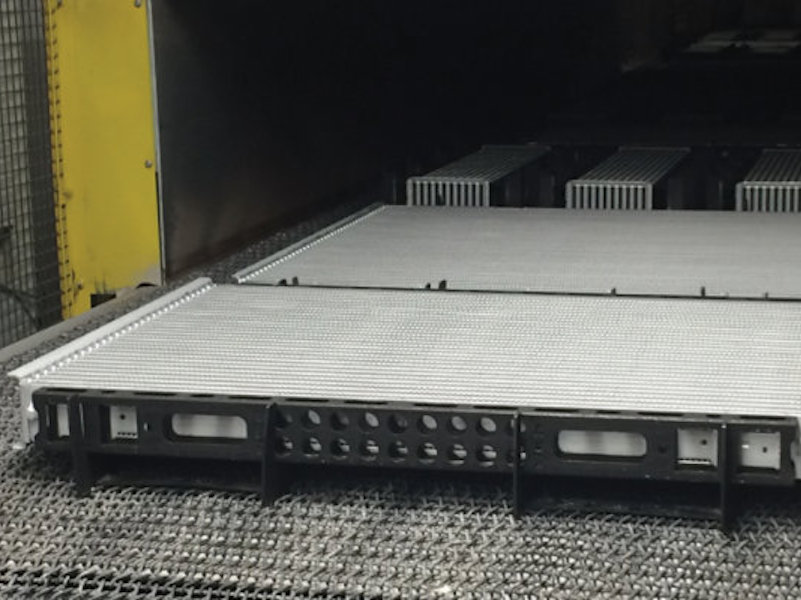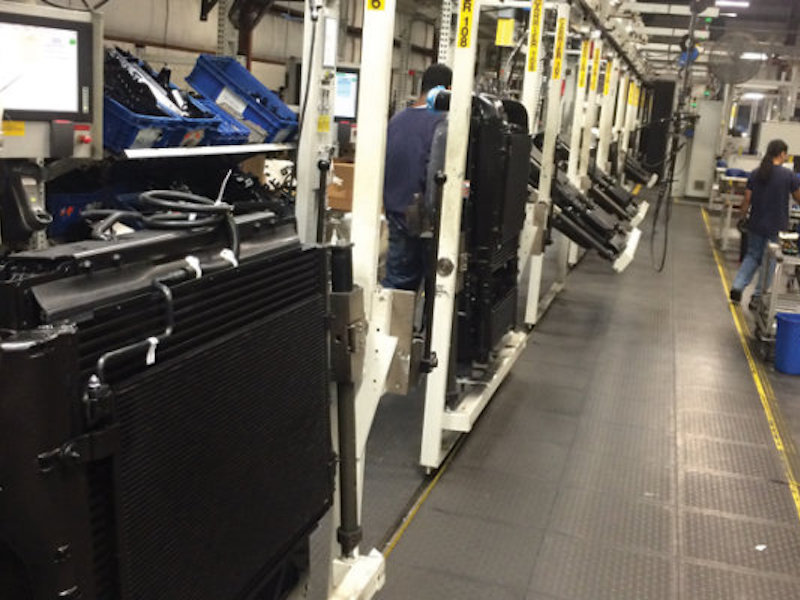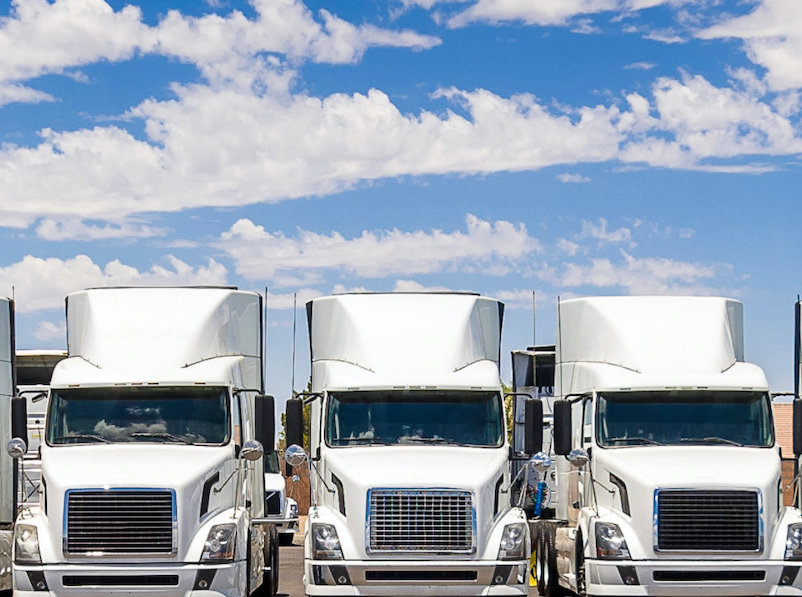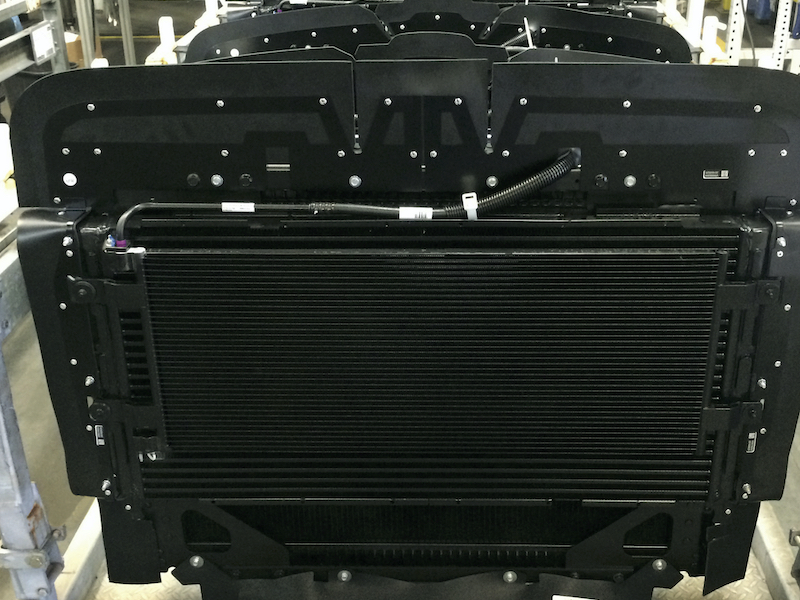Automotive tier supplier Mahle Behr had a situation on its hands when only one certified paint company met its rigorous heavy truck specification for underhood black paint on aluminum, and the coating was increasingly difficult to work with. The search began for another paint supplier that could be certified to this demanding spec.
Based in Charleston, South Carolina, Mahle Behr is the thermal management business unit of Mahle, and is a leading global tier supplier of commercial vehicle air conditioning and engine cooling components such as radiators, condensers and charge air coolers. The company is a supplier to major heavy truck manufacturers and automotive OEMs.
Sherwin-Williams Industrial Coatings was a local supplier of small paint quantities to Mahle Behr. But that would eventually change when their sales representative, Todd Hausen, offered to involve Sherwin-Williams in the exhaustive testing process for new paint qualification and supplier process verification.
Meeting a tough specification
 And so the process began to develop the exact black single- application two-component urethane finish that the engineering specifications require.
And so the process began to develop the exact black single- application two-component urethane finish that the engineering specifications require.
The finish itself is purely cosmetic in its function, according to Jim Conner, Mahle Behr’s senior manufacturing engineer. However, standards for underhood paint on nonferrous substrates do not stop at aesthetics alone.
“It’s a tough spec for any coating supplier to meet,” says Conner.
A new Mahle Behr supplier would need to produce testing results that validated a host of performance metrics. These included the ability of paint samples to withstand very aggressive acid-salt spray and 750 hours of humidity exposure, as well as no adhesion loss, fading or softening after 15 double rubs of methyl ethyl ketone and other chemicals.
“It takes an exceptional paint to withstand migration and blistering after hours and hours of exposure to acid salt spray, humidity and harsh chemicals,” says Conner.
 A separate challenge involved the aluminum brazing process used in production of heat exchangers such as radiators. Essential for bonding all connectors and brackets to the aluminum assembly, the process leaves behind a difficult surface profile for painting. Hausen said an epoxy tends to work better than a urethane for this, but the specification also requires chalking resistance levels following ultraviolet exposure that are nearly impossible to achieve with an epoxy.
A separate challenge involved the aluminum brazing process used in production of heat exchangers such as radiators. Essential for bonding all connectors and brackets to the aluminum assembly, the process leaves behind a difficult surface profile for painting. Hausen said an epoxy tends to work better than a urethane for this, but the specification also requires chalking resistance levels following ultraviolet exposure that are nearly impossible to achieve with an epoxy.
Developing a suitable urethane was a two-year process, Hausen said, but Sherwin-Williams’ R&D team overcame all obstacles, testing out for Mahle Behr on all fronts important to their customer.
Improving the process and finished appearance
But other day-to-day benefits also resulted.
“Without a doubt, one of the biggest plusses of switching to Sherwin-Williams is the ease of use of the paint,” Conner says. “With our previous product, we usually had issues with viscosity and flow, plugged-up nozzles and lines. There was always something we had to stop production over and call in our maintenance techs. We don’t worry about that anymore.”
 That’s because of the Sherwin-Williams paint formulation, said Hausen.
That’s because of the Sherwin-Williams paint formulation, said Hausen.
“Our paint atomizes so that it sprays, flows and levels extremely well,” he says. “With this level of wettability and gloss consistency batch to batch, Mahle Behr has improved process time.”
Conner agreed: “Our painters actually had to re-gauge the way they painted. To address this, Sherwin-Williams dedicated people to provide onsite training. In addition, the robotic inspectors that check for deviations in specular gloss from the specification now operate with fewer requirements for human intervention because the gloss levels are more consistent.
Proximity and support across business unit
Topping off the advantages of having Sherwin-Williams as Mahle Behr’s coating supplier is local service for themselves, their service arm in Fort Worth, Texas, and another plant in Coahuila, Mexico.
“Having the blending and mixing nearby for all components of our final assembly and for service parts is important to us,” says Conner.
“We had so many ‘issues of the moment’ before,” he says. “We make radiators. Honestly, I don’t want to deal with problems about paint.”
Now, he doesn’t have to.



































